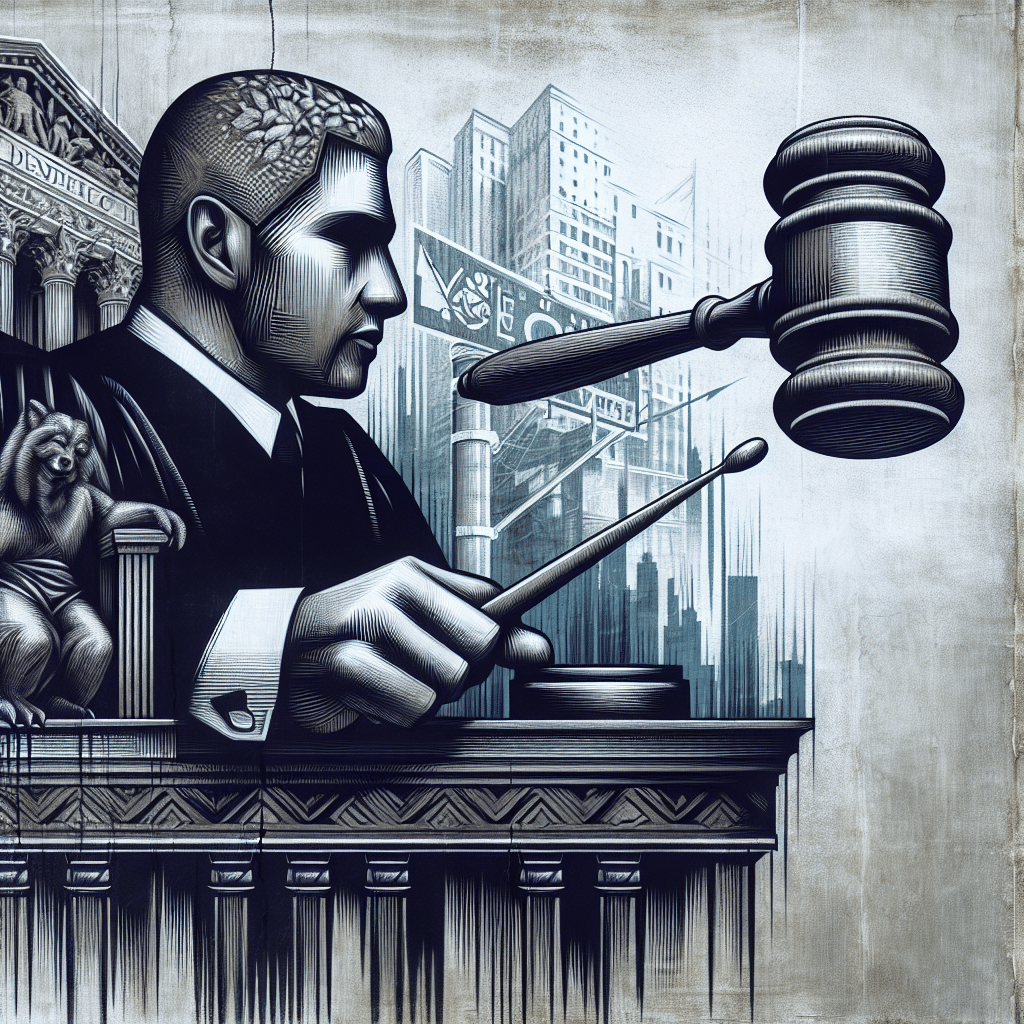In the dynamic world of digital assets and blockchain technology, legal proceedings and regulatory scrutiny have become as common as the technological innovations that spur the sector’s growth. One of the most recent developments involves Justin Sun, a prominent figure in the blockchain community, and his associated companies in the face of regulatory examination. This news has significantly impacted the blockchain industry, stirring conversations and debates about the future regulatory landscape of digital currencies and assets. This article delves into the implications of this legal decision, exploring its impact on the blockchain sector and what it signifies for the development and regulation of digital assets.
Understanding the Legal Battle: The Howey Test and Its Implications
At the heart of this legal scrutiny is the application of the Howey Test, a cornerstone in U.S. securities law used to determine whether a transaction qualifies as an investment contract and, therefore, a security. The New York District Judge’s ruling, which highlighted that Justin Sun and his affiliated entities are not contesting the ‘common enterprise’ element of the Howey Test, marks a significant moment in the broader dialogue about the classification and regulation of digital assets. This decision provides a crucial insight into how legal frameworks are being adapted and applied to the burgeoning blockchain industry, shedding light on the regulatory hurdles and compliance requisites faced by entities operating within this space.
The Broader Implications for the Blockchain Industry
The ruling has far-reaching implications for the blockchain sector, beyond the immediate ramifications for Justin Sun and his associated companies. Firstly, it underscores the increasing attention regulatory bodies are paying to digital assets and the entities behind them. The emphasis on the Howey Test’s ‘common enterprise’ element signals a nuanced approach to deciphering the complex nature of digital transactions as potential investment contracts. This is a clear indication that regulatory bodies are meticulously scrutinizing blockchain-based ventures to ensure they fall within the established legal frameworks designed to protect investors and maintain market integrity.
Furthermore, this development highlights the need for blockchain enterprises to navigate the legal intricacies of securities law proactively. Given the innovative and often disruptive nature of blockchain technology, the application of traditional legal principles like the Howey Test demands a careful balance between fostering innovation and ensuring regulatory compliance. Blockchain companies must, therefore, adopt a forward-looking approach, anticipating how their operations might intersect with securities laws and preparing accordingly.
Challenges and Opportunities Ahead
The intersection of blockchain technology with securities law presents both challenges and opportunities. On one hand, this interaction brings forth the challenge of fitting new, decentralized models of business and asset ownership into the traditional paradigms of regulation. This can lead to uncertainty and complexity for blockchain ventures, potentially slowing innovation or leading to unintended legal missteps.
On the other hand, this evolving legal landscape offers opportunities for clearer regulatory guidelines and frameworks that could ultimately strengthen the blockchain ecosystem. Clear, well-defined regulations can provide the stability and predictability necessary for long-term growth and development within the sector. This can encourage more significant investments by providing a more secure environment for investors, reduce fraudulent schemes, and increase the overall legitimacy and acceptance of blockchain technologies within mainstream financial systems.
Preparing for a Regulatory Future
The key for blockchain companies and innovators in this environment is to remain vigilant and adaptable. Understanding the implications of legal decisions such as the recent ruling involving Justin Sun requires a proactive approach to compliance and regulatory engagement. Blockchain entities must not only keep abreast of legal developments but also actively participate in dialogues with regulators and policymakers to shape a conducive regulatory climate.
This involves fostering a deeper understanding of how traditional legal concepts like the Howey Test apply to novel technologies and asset classes. It also entails advocating for regulations that support innovation while protecting investors and the integrity of the financial system. As the blockchain sector continues to evolve, its integration with existing legal and regulatory frameworks will be critical in determining its trajectory and the realization of its full potential.
Conclusion
The recent legal developments surrounding Justin Sun and his associated companies underscore the intricate dance between innovation in the blockchain space and the imperatives of regulatory compliance. While challenges abound in reconciling new digital phenomena with established legal frameworks, there lies a significant opportunity to craft regulations that nurture growth and innovation within the blockchain industry. As the sector moves forward, the ability of its leaders and innovators to navigate this regulatory landscape will be paramount in shaping its future and ensuring its sustainable, long-term success.
